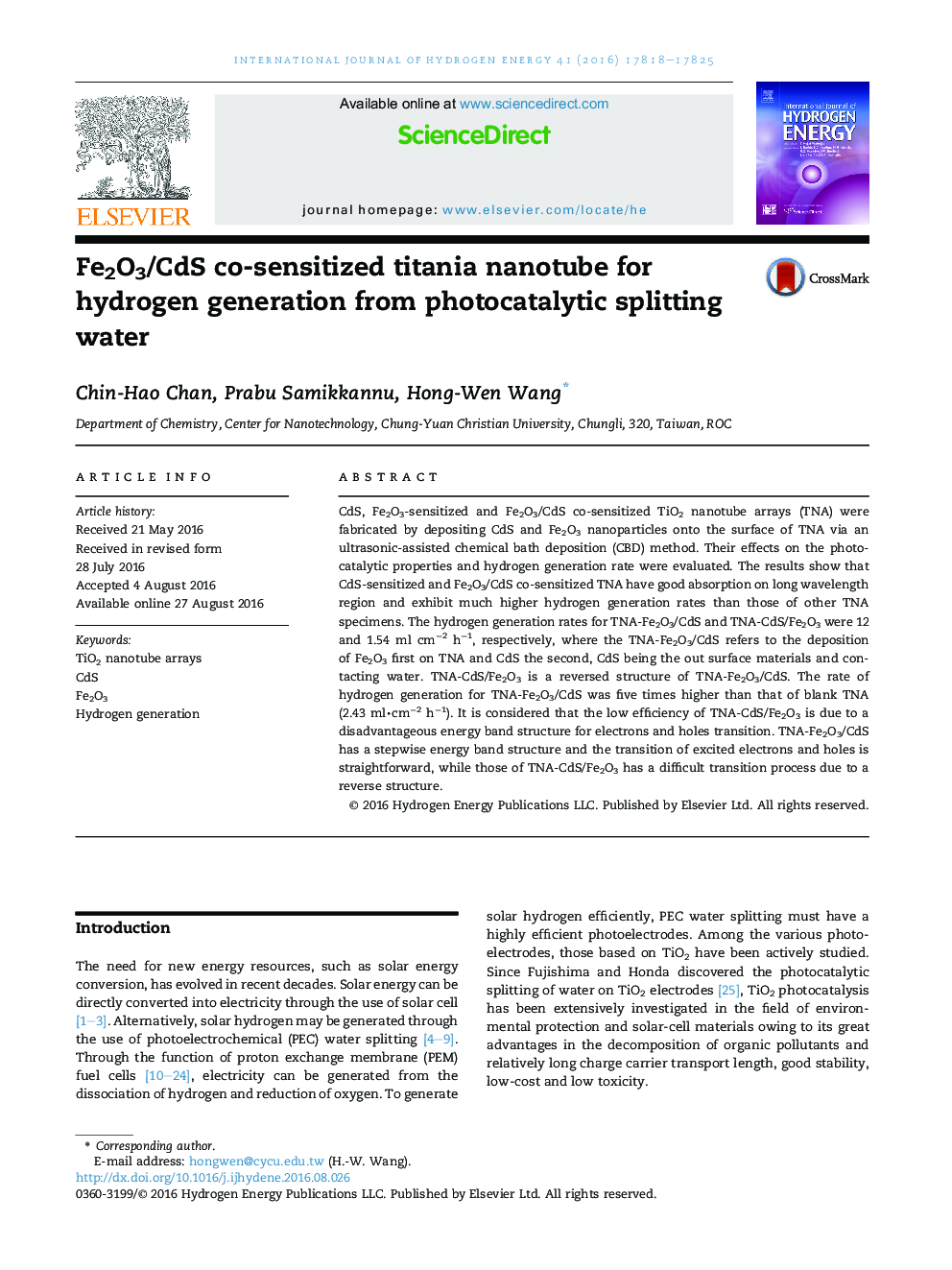| Article ID | Journal | Published Year | Pages | File Type |
|---|---|---|---|---|
| 5147528 | International Journal of Hydrogen Energy | 2016 | 8 Pages |
Abstract
CdS, Fe2O3-sensitized and Fe2O3/CdS co-sensitized TiO2 nanotube arrays (TNA) were fabricated by depositing CdS and Fe2O3 nanoparticles onto the surface of TNA via an ultrasonic-assisted chemical bath deposition (CBD) method. Their effects on the photocatalytic properties and hydrogen generation rate were evaluated. The results show that CdS-sensitized and Fe2O3/CdS co-sensitized TNA have good absorption on long wavelength region and exhibit much higher hydrogen generation rates than those of other TNA specimens. The hydrogen generation rates for TNA-Fe2O3/CdS and TNA-CdS/Fe2O3 were 12 and 1.54 ml cmâ2 hâ1, respectively, where the TNA-Fe2O3/CdS refers to the deposition of Fe2O3 first on TNA and CdS the second, CdS being the out surface materials and contacting water. TNA-CdS/Fe2O3 is a reversed structure of TNA-Fe2O3/CdS. The rate of hydrogen generation for TNA-Fe2O3/CdS was five times higher than that of blank TNA (2.43 mlâ
cmâ2Â hâ1). It is considered that the low efficiency of TNA-CdS/Fe2O3 is due to a disadvantageous energy band structure for electrons and holes transition. TNA-Fe2O3/CdS has a stepwise energy band structure and the transition of excited electrons and holes is straightforward, while those of TNA-CdS/Fe2O3 has a difficult transition process due to a reverse structure.
Related Topics
Physical Sciences and Engineering
Chemistry
Electrochemistry
Authors
Chin-Hao Chan, Prabu Samikkannu, Hong-Wen Wang,
